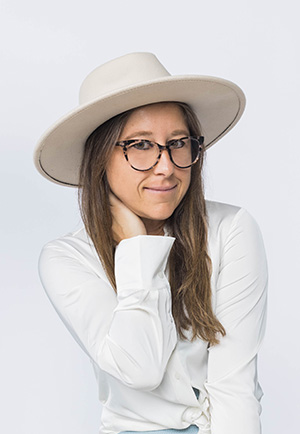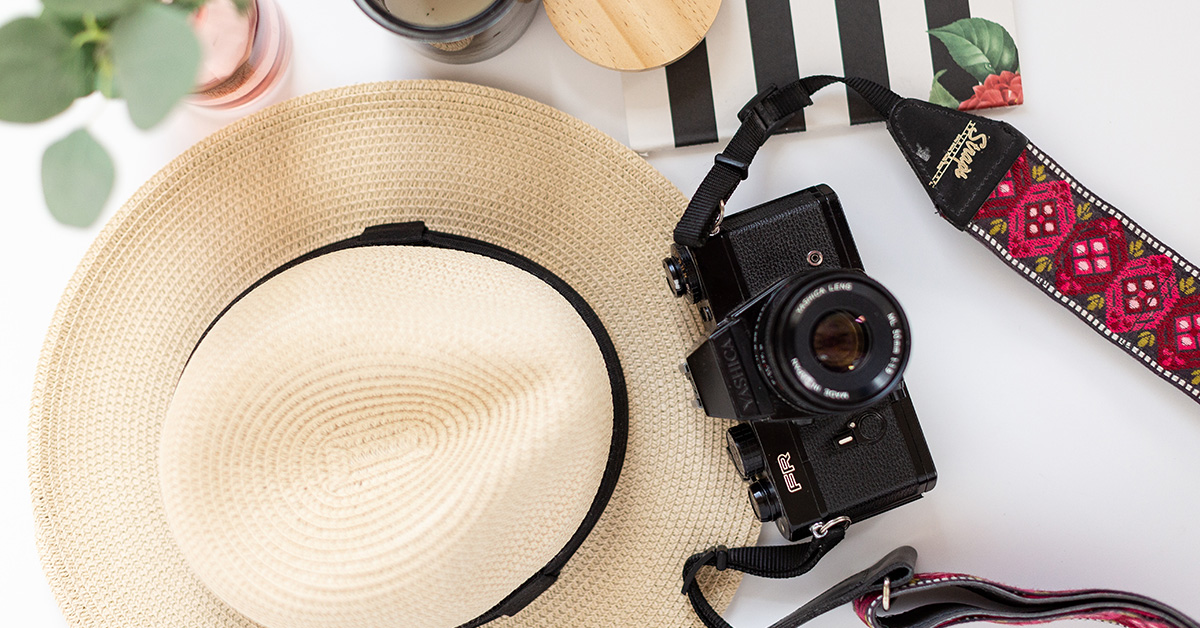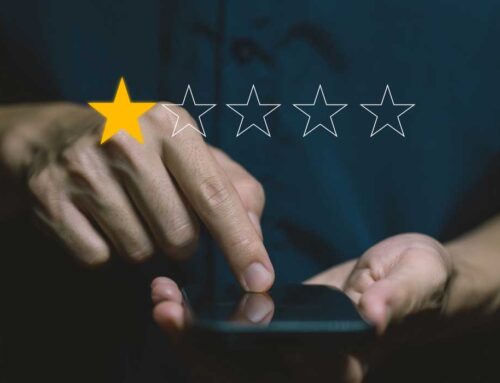How to plan a picture-perfect photo shoot for your company. That's what we're talking about on today's episode of Propel Your Practice.
Welcome to the Propel Your Practice Podcast, where we talk about actionable marketing strategies and tactics you can apply to improve your clinic's online presence; I’m your host Darcy Sullivan with Propel Marketing & Design.
In today's episode of Propel Your Practice, I'm sitting down with one of my favorite photographers, Chelsea Erwin Burns, to chat about how you can plan your next– or first– picture-perfect photo shoot.
Today, I am thrilled to be joined by Chelsea. Chelsea is the woman behind the lens of Maris Lifestyle Photography. She's worked with brands such as Lily Pulitzer, Teleties, Sandals Resort, and created imagery for cities in South Florida. In fact, you can see some of her work standing tall on billboards in New York and Canada.
She specializes in branding, headshots, commercial lifestyle photography, and enjoys working with local businesses to help them build their clientele through targeted images created specifically for them. I am so excited to have Chelsea here with us today to talk about how you can be better prepared for your next or first photo shoot.
Darcy: Hi Chelsea.
Chelsea: Hi Darcy. How are you?
Darcy: I'm good. I'm so excited to have you here. I still have PTSD from elementary, middle school pictures, and I feel like most people listening do. And I remember when I first started my company, I knew that we needed company pictures. I had a friend who was not a professional or semi-professional come over to my house; I put on a suit. And I paid her in wine and had her take pictures of me because I thought that was going to be a good representation of the company.
Then I met a semi-professional photographer, and she raked up some crazy lighting system and took some decent or much better pictures, but they still weren't the caliber of a professional photographer.
I think in 2015…
Chelsea: It was 2015, I believe 2015.
Darcy: You did the first set of pictures for Propel, and you've done a couple of those since, and, what a difference!
And having somebody professional take care of your company photos is just such a difference in the way your brand is represented.
So, I wanted to have you on today because I know that there are tons of people out there that are wondering if they should have a branded photo shoot. If they really need a professional to come out to their clinic to take photos. And just wanted you to give some tips.
So, we both know that when you have professional photos, you can use them for a world of things. You can use them for social media, for your website, for email blasts, for promotional materials. You know, the list goes on and on, but some people have a difficult time picking out the right photographer.
Do you have any tips on how you can pick out the best local photographer?
Chelsea: There's a couple of ways that you can pick the best photographer for your photo shoot. The first thing is obviously to take recommendations from other people that you know have used a certain photographer.
You should still definitely research that photographer, make sure their style fits into what you're looking for. Because there are all kinds of different types of styles when it comes to headshots, lifestyle photography for your business, social media photography. So you need to make sure that your photographer fits with your brand and what you're trying to achieve during your photo shoot.
Darcy: Absolutely. I think those are some really good points. And do you find when people come to you for company photography that they've either already pulled examples or do they base it off of what they've seen you do before? They're like, “Ooh, we want that style that feel!”
Chelsea: I believe it's a combination of both. Because I work with a lot of local businesses, some of them up and coming, most of the time, it is their first photo shoot ever, or they've had bad experiences with other photographers and they're trying to get a certain look and it just didn't work out the way that they like it.
Sometimes they like a certain shoot that I did; sometimes, they'll have a Pinterest board. Which, I know, sometimes everyone's like, “Oh gosh, Pinterest boards.” But honestly, I love them because it gives me a sense of what the client wants.
So don't be afraid to do those vision boards– examples of anything and everything that you're looking for– so that the photographer knows exactly what you want. And that way, you can make sure you're on the same page as the photographer. Because you don't want to show up at the photo shoot without them knowing exactly what your vision is.
Darcy: I think it's also important to show them… let them know how you plan to use the photos. So, if there's a specific area on your website where you want to use those photos, you want to make sure that they're taking images that are going to fit those dimensions as well.
Chelsea: Yeah. That's absolutely correct. Whenever I'm initially meeting with a client, I initially ask them for their website. If they're doing a brand new website, I ask them if they have the layout, if they want to mix vertical and horizontal images. You know, some websites are going to be square photos, so you need to make sure you're shooting a quarterly and giving enough space to crop.
You know, obviously social media, Instagram, all of those things are sized differently than websites and crop differently, so it's really important to lay out exactly what you're going to use them for, whether it's social media ads, website, email blasts, any of those things, are super important for your photographer to know.
Darcy: So it's important to know how you're going to use the photos. It's also important to know how many you need because obviously, it's going to be a different price. If you feel like you're only gonna need five photos versus 25 photos.
And you also need to ask about rights. Do people who use photographers, still request rights? Like, I know it used to be on some websites where it was down in the corner, where it was, like, photos by name of studio.
Chelsea: That is something that is all over the board, depending on the photographer.
For me, personally, say I'm doing something where they want unlimited rights to the images, that means the photography package is going to be more expensive because they're wanting lifetime rights to the images. But sometimes somebody will be like, “I just want them for a year. This is just what we're going to use for the year. We don't need them for unlimited use.” So then that's going to be a different price.
It's just dependent on what the client wants.
Darcy: But you're going to want to examine the contract and make sure absolutely you know how many photos you’re getting and if touch-ups or retouching is included in that. So those are all very important things to look for when you're first starting to scope out what photographer you want to work with.
Chelsea: Since you mentioned contract, that's something that I've learned over the years is that people don't read their contracts. And that is shocking to me, because that just opens a whole can of worms later.
That should be number one on your list- that everything that you discuss with the photographer, whether it's rights usage, location, how many images you're going to use… it doesn't matter, but that everything is laid out in that contract and that you read it because that is something that you could get kind of stuck on down the road, biting you in the butt later, if you don't do that.
Darcy: I can imagine, I can imagine. So, now how long should a company budget time-wise for a photo shoot? Is there, and I, I know, I know different photographers are going to take different amounts of time, different number of photos…
If you're doing individual on top of that, you know, if you were doing multiple locations outside, inside? Is it something that they can get done in 30 minutes? Should they budget two hours, four hours, a whole day?
Chelsea: So for me, I offer half-day and full-day rates. One, because that way you're not rushed, you can do multiple locations and you're going to get the most out of your photo shoot.
You don't want to be stuck trying to do multiple photos; photo shoots over extended periods of time because you don't have enough content to get you through. You know, six months, eight months, however long it is. So for me, I personally feel that half-day and full-day shoots are what you should shoot for so that you can get the most out of your money and not have to be doing photo shoots all the time.
Darcy: I think that's a great idea. And when you are putting together, you know, your plan, you want to make sure that you've got, like, a shot list of photos.
Chelsea: Absolutely.
Darcy: That's what they call it, a shot list, right?
Chelsea: Absolutely.
Darcy: And that has every single type of photo that you want included.
And, I wanted to go through, kind of, a list of some that I suggest or where you would use these, to make sure that you get them.
And I'm gonna just kind of give the example from yesterday. I believe I was speaking with, a chiropractor, actually, it was their office manager, and they had just had a photo shoot. And I'm, “Oh, did you remember to ask the photographer to get a picture of the outside of the building?” And she's like, “Well, we would've, but there was two feet of snow, so it's going to have to wait.”
But you want to make sure that you're taking advantage of getting every photo that you want when you schedule a photographer.
So this can include the outside of the building, the inside of the building, the lobby. If you offer specific techniques, I want to make sure that you're getting photos of you at every stage doing those techniques or, you know, adjusting somebody if you're a chiropractor.
And, ideally, like, I get it that you're not going to have 12 different people too, that are going to come in, that you're going to be able to work on or use as though they're pretending to be patients, but you do want to make sure that you've got a variety of people that you're using for that.
And, also that they look like your target audience.
Chelsea: Yeah, absolutely. And that they're usually wearing solid colors because patterns can kind of be a little, well, in this specific case, yes, patterns are going to be very distracting. Obviously, you want everything to be clean and not crazy.
But, you know, generally, if you can keep it to solids, no bright colors, things like that. You want to avoid logos and things like that.
Darcy: Yeah. And I think that's a really good point because one of the problems that I see is a lot of people like to wear their company logo, the shirt with the company logo on it, which is okay, but it ends up with the logos either hard to read or if a web designer goes to try to flip the logo, flip the image, then the logo's backward.
So if you can do solid colors and, like you said, nothing crazy when it comes to the colors, I think that that's a good idea.
And, if you don't have people that are coming in posing as your patients, you know, you can have other practitioners, other team members pose as them. Just make sure that you maybe don't get their direct headshot.
So it could be, you are performing a specific technique, they're there, but their face isn't shown so that it could be, really generally anyone, you just want to make sure that it really aligns with your target audience.
I remember a couple months ago I was looking through a website of a chiropractor, and I was like, “Oh, so your target demographic is a 25-year-old male who's in shape?” And he's like, “No, not at all.” And I'm like, “Well, that's all you have pictures of throughout the website.”
So you want to make sure that your photos of who you have staged as coming to visit your clinic, directly correlates with the audience that you're trying to attract.
Chelsea: Yeah. And that's where, you know, really look at your audience, then you know what you need as far as models, if that's what you're bringing in for the shoot. If you have the budget for models, that's always great.
Um, if you can finagle your employees to model, sometimes that can work too, depending on the photographer. And, you know that, not to jump back, but that's another thing that you can discuss with your photographer too, is if they're comfortable working with non-models and if they're able to do that because that's something that I have to do all the time. And honestly, I love it because then it creates a real vibe for the shoot. And I think it helps your clients connect because these are real people.
Darcy: Absolutely. And that's one of the reasons that having a branded photo shoot is going to help you because you're not using those generic stock photos.
Chelsea: Exactly. Exactly.
Darcy: But you do want to make that shot list before. You know, listing out where you plan to use it, even if it's just like pointing to an empty area because you think you're going to use that later on Instagram with, like, a tip or a bubble or something, then go ahead.
So make that shot list and then send it to your photographer ahead of time. And make sure that those and all the work that they're included in the budget that they've quoted you, that everything kind of fits together.
Chelsea: Some photographers, again, like, get a little weird about shot lists, but for me, shot lists help me get a vision of exactly what they want. Now that doesn't mean we have to shoot it exactly a certain way. Like, that still leaves creativity open to those images, but it's always good to give your photographer a sense of certain shots that you need.
Darcy: Yeah. And then, you should feel comfortable if the photographer is a professional and they're like, “Hey, move your arm like this, or adjust the direction …”
Yeah, let them kind of direct you with that.
Chelsea: Now, a couple other things that I wanted to mention, kind of my pet peeves. One, we mentioned that the logo on the shirt can sometimes be awkward, wearing bright colors can sometimes be a distraction. Also, just take your cell phone out of your pockets and gosh, uh, phones, wallets, glasses. And, just because I do weddings too, like, I'm literally like a hawk when it comes to wallets. Uh, armbands, like, hairbands on wrists. Yeah. Because like, I will spot them from a mile away.
Darcy: Yes.
Chelsea: So, you know, that's another thing, just to be mindful, you know, to things in the background of images. And again, this is something that your photographer, if they have good experience, they will be the ones that will be moving things, making sure stuff's not in the shot: trash cans, Coke cans, food.
They will be kind of styling the scene when they're there. Putting computers where they want them or where they don't want them, if they want to, you know… Yeah, exactly. Like pretty much setting the scene and tone for each spot that you're shooting.
So, you know, that's something that's super important because you don't want to get your photos back and be like, “Oh man. Man, there's the trashcan. We forgot to move that.”
Darcy: Yeah. And always remember, like, what's in the shot is what people are going to see. So if you need to move stuff out of that shot just for a minute, then maybe move some plants from the lobby in so that it looks softer.
Or move things around; you can easily do that. But yeah, you definitely want to take a look around the surrounding because I've seen professional photography, not yours, but others come back, yeah, and it had like bottles of water or trash. And just, I, it leaves you wondering why. But you just want to plan ahead for that.
Chelsea: But that goes back to giving yourself enough time on the shoots because it's happened to me. Like, if I'm rushing and I'm really, really, like, on a tight deadline, like, things do get overlooked. It's just, it can happen.
So, that just goes back to planning enough time for your shoot, too. So you're not rushing around.
Darcy: One more thing that I think we forgot to talk about and goodness, as I am no photographer, so I would love your opinion on this, but, the different time of day. When you take pictures, obviously, if you have natural sunlight, it's going to be different, right? And when you're taking pictures of people inside, does that still come into play?
Chelsea: Absolutely. So, it's very dependent on the building. Obviously, how much natural light you have in each room. And, if you're shooting on location outside somewhere, you, obviously, have to take into fact, like, there could be really harsh light and all of these things. There's so many factors.
So, how to plan that out? You can have your photographer come to your location and say, “Okay, this time of day is when this room gets the best kind of light.”
“If we're moving to a different location outdoors, this is the best time to do this.”
So it's really dependent on where you're shooting and at what time of day.
For me, say it's an office building that has a lot of windows; usually, morning-time or mid-day could be good, depending on which way the windows are facing. It's just; there’s a lot of different factors that kind of go into that.
But also, if you're going to hire a photographer for this, you need to make sure that they're well versed in lighting anyway and have lighting that they can bring in. That way, it doesn't really matter what the lighting looks like in there. They can kind of create the light, so that's something that you should do during your research time on photographers.
Darcy: I think that's a really good point. Also, one thing that I like to suggest, as long as you're having somebody come out and take pictures and if you're planning to use them for months and months ahead of time on social media and throughout your other marketing efforts, you might want to have a couple of changes of clothes.
Just so you've got, again, just a mix, so it's not just the same shirt over and over again, and you can try to stay within your company colors. Just make sure if, you know, if your company colors are lime green, you probably don't want to wear a lime green shirt; you want something a little bit calmer, so take that into consideration.
And then, Chelsea, do you have any tips? Like, I know that most people are not comfortable and can be very awkward when they're getting their picture taken. Do you have any tips at all to help somebody loosen up other than tequila?
Chelsea: Well, tequila was going to be my main… No. Um, I mean, again, that's going to go back to the photographer. When I come in, and I’m shooting for a business, and it's their employees, I really like to– as soon as I arrive on location with them– start talking with them, get comfortable with them, joke around with them.
Like, I don't just roll up and be like, “All right. Let's do this; let’s shoot.” You know, I feel like everyone's got to get comfortable, no matter what type of photo shoot I’m doing. Whether it's weddings or a commercial shoot or whatever, the first thing everyone always says is, “Chelsea, I’m so awkward in front of the camera.” And I’m like, “Amazing, me too.”
Like, we're in this together, you know, and so I think it's really about making it fun no matter what it is and getting people comfortable. If you need to take a tequila shot, I'm not going to judge.
Yeah. Um, but, yeah, it's really just creating a little bit of a relationship, you know, when I get there and, you know, just kind of taking the edge off for people.
Darcy: So, I think that's great.
I have a few extra tips after you receive the photos from the photographer.
One is to make sure that you save all of the raw images to the cloud– you can use either Dropbox or Google Drive for this– then make sure they're organized so if there are a few that you don't like, you can have those in a specific folder so that your team doesn't use them.
And then keep in mind that if you're going to be using the photos for your website or for social media that they need to be sized appropriately so you can create other folders and go ahead and have them either sized by your photographer or if you need to, in a quick matter of time you can go to Canva and do them.
You know, get them sized for social media or any of your other needs. And then just go ahead and save them in organized folders on the cloud so that any of your team members can go back and grab them whenever they need to.
Well, Chelsea, I want to thank you so much for coming on this episode, and can you share with everybody how they can get ahold of you and your website if they're interested in learning more about your services- especially if they're located down in sunny South Florida.
Chelsea: Yes, so I am located in Wellington. I have a studio there. You can check me out at marislifestyle.com, that's M.A.R.I.S lifestyle.com. You can reach out for any of your headshots and commercial shoots, you can come to hang with me at my studio, and we'll have a lot of fun. But, yeah, that's where you can check out all my work!
Darcy: Sounds good! All right, you can find out more about Chelsea Erwin Burns by checking the show notes in this episode.










![How to Write a Professional Chiropractic Bio [Template Included]](https://propelyourcompany.com/wp-content/uploads/write-a-bio-500x383.jpg)
